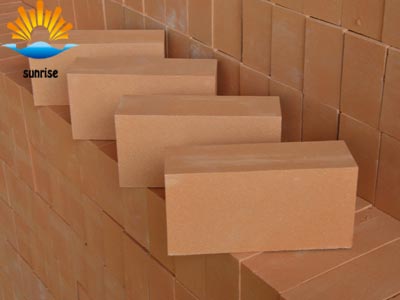Analysis of the performance of chrome corundum brick products
2019-11-22
As a high-quality chrome corundum brick manufacturer, Sunrise Refractory today introduces the product performance of chrome corundum brick. Mainly introduced from the following aspects:
1. Fire resistance of the product.
It can be seen from the binary phase diagram of Al2O3-Cr2O3 that Al2O3 and Cr2O3 can form a continuous solid solution without eutectic. Therefore, the addition of Cr2O3 to the high-purity corundum material, regardless of the amount of addition, not only does not reduce the fire resistance of the material, but also improves the fire resistance of the material. The refractory degree (>1790!) and load softening temperature (>1700!) of chrome corundum bricks are superior to high purity corundum products.
2.The strength of the product
The normal temperature compressive strength of high-purity corundum bricks is generally 70-100 MPa, and the normal-temperature compressive strength of high-performance chrome corundum bricks is generally >150 MPa, and its strength is significantly higher than that of corundum bricks. This is because during the firing process, between the particles and the particles, between the particles and the fine powder, the Al2O3-Cr2O3 solid solution is formed between the fine powder and the fine powder, and the solid solution connects the particles and the fine powder like a bridge. Together, the strength of the material is greatly increased.
3. Thermal shock stability
According to the data, when Cr2O3 is added to corundum, when the content of Cr2O3 is 10%~66%, the thermal shock stability of the material decreases with the increase of Cr2O3 content, that is, the chrome corundum brick with low Cr2O3 content has good thermal shock resistance. Chromium corundum brick with high Cr2O3 content.
4.Resistance to slag erosion
The solubility of Cr2O3 in coal gasifier slag (SiO2-CaO system) and various glass melts is much smaller than that of other oxide materials. Therefore, Cr2O3 or Cr2O3-containing refractory materials have good corrosion resistance to steel slag, colored smelting slag, coal gasifier slag, oil gasification furnace slag and various glass melts. The viscosity of the liquid phase formed by the reaction of Cr2O3 melt or Cr2O3 with slag is greater than that of other low-melting materials, which prevents the slag from penetrating into the interior of the brick body along the capillary pores, avoiding the formation of metamorphic layers and causing structural spalling.
